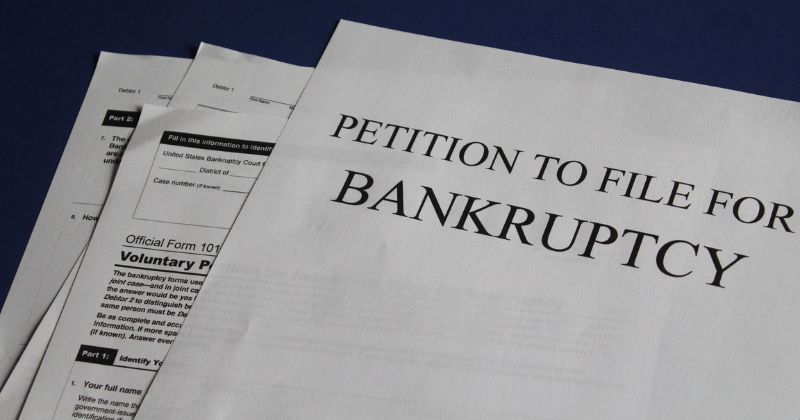How To File Insolvency Petition?

Insolvency can be an overwhelming and confusing experience, but it can also offer a pathway to financial recovery. When individuals or businesses are unable to meet their debt obligations, insolvency provides a structured legal process to help them either discharge their debts or reach an agreement with creditors. For those navigating this route, understanding the process of filing an insolvency petition is essential. This guide walks you through the necessary steps, including the requirements, procedures, and options available, with references to services like RupeeRelief, which can assist in debt resolution. Insolvency occurs when an individual or organization is unable to repay their outstanding debts. This can be a result of financial mismanagement, unexpected life events, or poor market conditions. Insolvency proceedings provide a legal framework for individuals or companies to address their financial difficulties by either settling their debts through negotiations or liquidating assets to pay creditors. There are two primary forms of insolvency for individuals: Personal Insolvency and Corporate Insolvency. Personal insolvency applies to individuals who are unable to meet their financial obligations, while corporate insolvency pertains to businesses facing similar challenges. In India, the Insolvency and Bankruptcy Code, 2016 (IBC) is the primary legal framework governing insolvency proceedings. Filing an insolvency petition can help individuals or companies resolve their debts and find financial stability. The process allows for: For individuals struggling with mounting unsecured loans, credit cards, or other debts, services like RupeeRelief can guide them through the legal intricacies of filing an insolvency petition and assist with debt restructuring. Before proceeding with an insolvency petition, it's essential to evaluate your financial situation thoroughly. This includes understanding: An insolvency petition should be considered when your financial situation is beyond recovery, and there is no reasonable way to pay off your debts. For those unsure, services like RupeeRelief offer debt counseling and financial advice to help assess whether insolvency is the right option. Insolvency proceedings can be complicated, requiring a detailed understanding of legal provisions and procedures. Consulting an insolvency professional is highly recommended. These professionals include: Additionally, some services like RupeeRelief assist with debt restructuring and offer support in negotiating with creditors before filing an insolvency petition, which can sometimes lead to a resolution without going to court. Once you've assessed your financial situation and consulted with professionals, you can proceed with filing the insolvency petition. In India, there are two main types of insolvency petitions that can be filed: This petition is filed by an individual who is unable to pay off their debts. The petition is typically filed with the National Company Law Tribunal (NCLT) or, in some cases, the Debt Recovery Tribunal (DRT). The individual must provide: If a company is unable to meet its financial obligations, its creditors or the company itself may file a petition for insolvency. This petition is filed with the NCLT under the Insolvency and Bankruptcy Code. The petition must include: Once the petition is filed, the tribunal (NCLT or DRT) will review the case. If the petition meets the necessary criteria, the tribunal will admit it and initiate the insolvency process. During this phase, a resolution professional (RP) will be appointed to manage the insolvency proceedings. The RP will: For businesses, this step could involve working with a RupeeRelief-type service to navigate the complex process of asset valuation, debt restructuring, and negotiating with creditors to find a mutually acceptable resolution. Once the petition is admitted and the process progresses, the debtor and creditors may reach a settlement or resolution. There are two possible outcomes: Once the insolvency proceedings conclude, the debtor will either be discharged from their debts or will have a restructured payment plan in place. A discharge means that the individual or business is no longer legally required to pay the remaining debt, offering a fresh start. However, for those who undergo a liquidation process, it may take time before they can fully recover. For individuals and businesses dealing with multiple debt sources, services like RupeeRelief can provide tailored support throughout the process, helping ensure that the best possible resolution is reached. Filing an insolvency petition is a significant decision that requires careful thought and expert guidance. By understanding the process and seeking professional advice, individuals and businesses can regain control of their financial futures. Whether opting for debt restructuring or liquidation, services like RupeeRelief can assist in guiding you through each step and helping ensure the process is as smooth and efficient as possible. Remember, insolvency is not the end—it can be the beginning of a new financial chapter. Seeking professional assistance and exploring all available options will help you navigate this challenging time effectively.What is Insolvency?
Why File an Insolvency Petition?
Step 1: Assess Financial Situation
Step 2: Consult a Professional
Step 3: File the Petition
Individual Insolvency Petition
Corporate Insolvency Petition
Step 4: Tribunal Review and Admission
Step 5: Resolution or Liquidation
Step 6: Discharge of Debts
Conclusion

